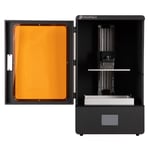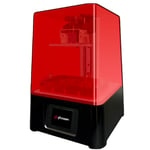Elegoo gained accolades for its budget Mars LCD printer, which offers quality resin printing for an affordable price – but with a pretty standard build volume. Now Elegoo is expanding on this success with an entirely new offering.
Enter the Elegoo Saturn. In an already crowded market of budget LCD printers, there are only a few ways to stand out: resolution, print speed, and print size. With the Saturn, Elegoo delivers a printer with a build area that is just over two-and-a-half times the size of the Mars, and – as icing on the cake – features a monochrome LCD that promises blisteringly fast layer cure times.
This puts the Saturn in a unique place in the market, offering a mid-sized build area where consumers have previously been forced to choose between either smaller budget machines or, on the opposite end of the scale, much more expensive mid-to-large machines. With the Saturn, Elegoo delivers a rare first, as the machine hits pretty much smack-bang in the middle of the spectrum.
But can it live up to the much-hyped Mars, or even surpass it?
We’ve gone hands-on to find out.
Hands On
To say the Elegoo Saturn is one of the most eagerly awaited consumer MSLA 3D printers ever is no understatement. Such was the mark its pint-sized predecessor, the Elegoo Mars left. Producing premium prints without a premium price tag, the Mars arguably picked up where the Anycubic Photon left off in building the bridge between the print capabilities of high-end SLA 3D printers and consumers on a budget.
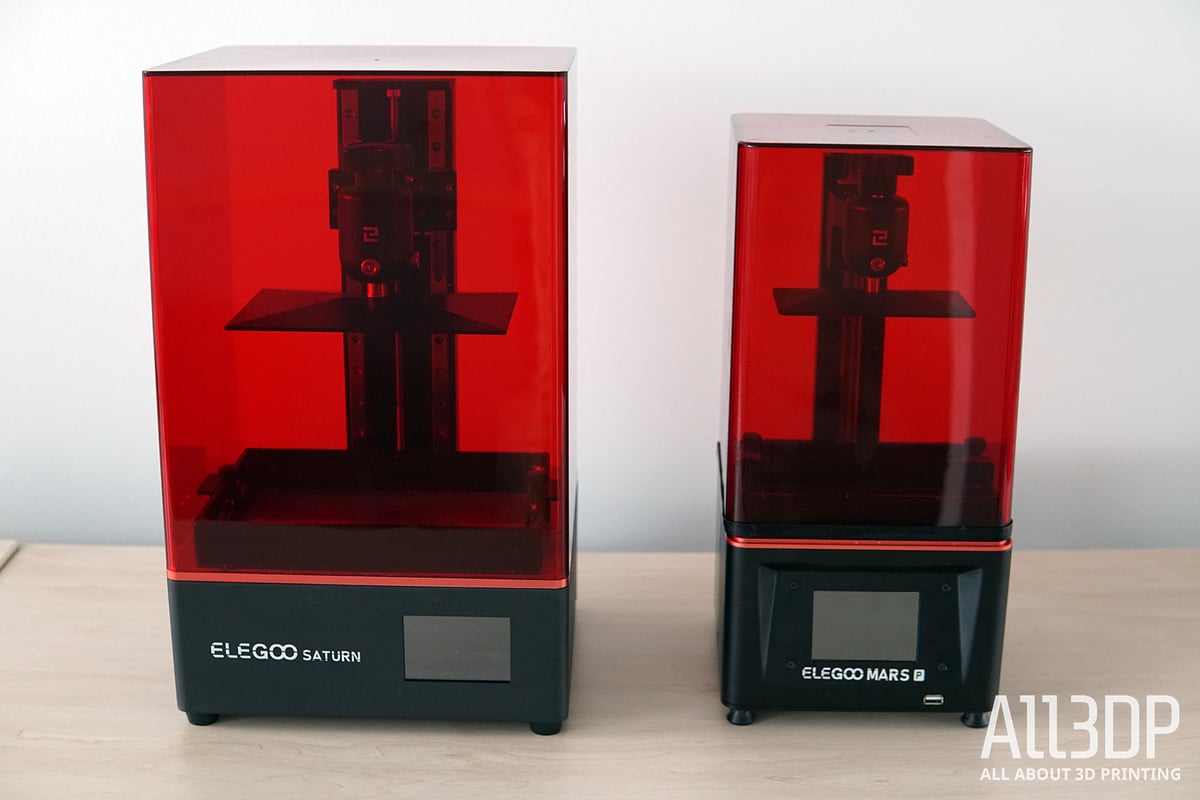
But enough merits of the past, the new and shiny Elegoo Saturn promises all that and even more, with the new monochrome display and bigger build volume. The monochrome display came somewhat as a surprise, with beta-unit testers around the globe happily printing away 2K display-equipped units. Following feedback from these users – and perhaps sensing a shift in what should now be considered the norm – Elegoo made the switch from a “standard” 2K LCD to a monochrome 3840 x 2400 pixel panel, simultaneously increasing print resolution and speed.
But let’s start from the ground up.
Design and Features
The Elegoo Saturn is in many ways similar to the Mars and Mars Pro that came before it, carrying forward many of these predecessors’ traits, peppering them with practical improvements that acknowledge the jump in size and difficulties it brings.

The base unit is as solid as can be with a 280 x 240 mm footprint. The sturdy, all-metal chassis encompasses the 3.5-inch color touchscreen at the front, two fans in the back, and the USB port on the right side.
It seems to be somewhat of a tradition at Elegoo, to rearrange the USB slot for every machine the company releases. For the Mars, it was at the back (awful), the Mars Pro had it in front (optimal), the same as the Saturn Beta unit, and now Elegoo has settled somewhere in the middle and placed it on the right-hand side of the 3D printer (acceptable). Why the sudden change from the beta unit, we can only guess, but we’d put our money on the interior rearranging due to the new screen.
On top, the vat resonates (resinates?) with us. Besides its enlarged capacity – to make use of the 192 x 120 mm in the X and Y – it irons out one of the downsides of the Mars and Mars Pro; it is removable from the top and does not have to be awkwardly slid out sideways. Further beneficial improvements include four protruding bumps on the corners beneath the vat, allowing you to set it aside without fear of damaging the FEP film with dust and debris.

Last but not least, the vat now includes a pouring aid in one corner, which does make the change of resin a little bit less messy. Something not carried across from the Mars Pro is some kind of resin fill level indicator inside the vat, especially with the enlarged build volume and the need for more resin. Granted, Elegoo does include a measuring cup, but this just adds to the mess.
The backbone of the 3D printer is its Z-axis. Here, Elegoo also buffed up the Saturn, which now features dual-linear rails, flanking the Z-axis lead screw and sturdily guiding the build plate up and down the print volume.
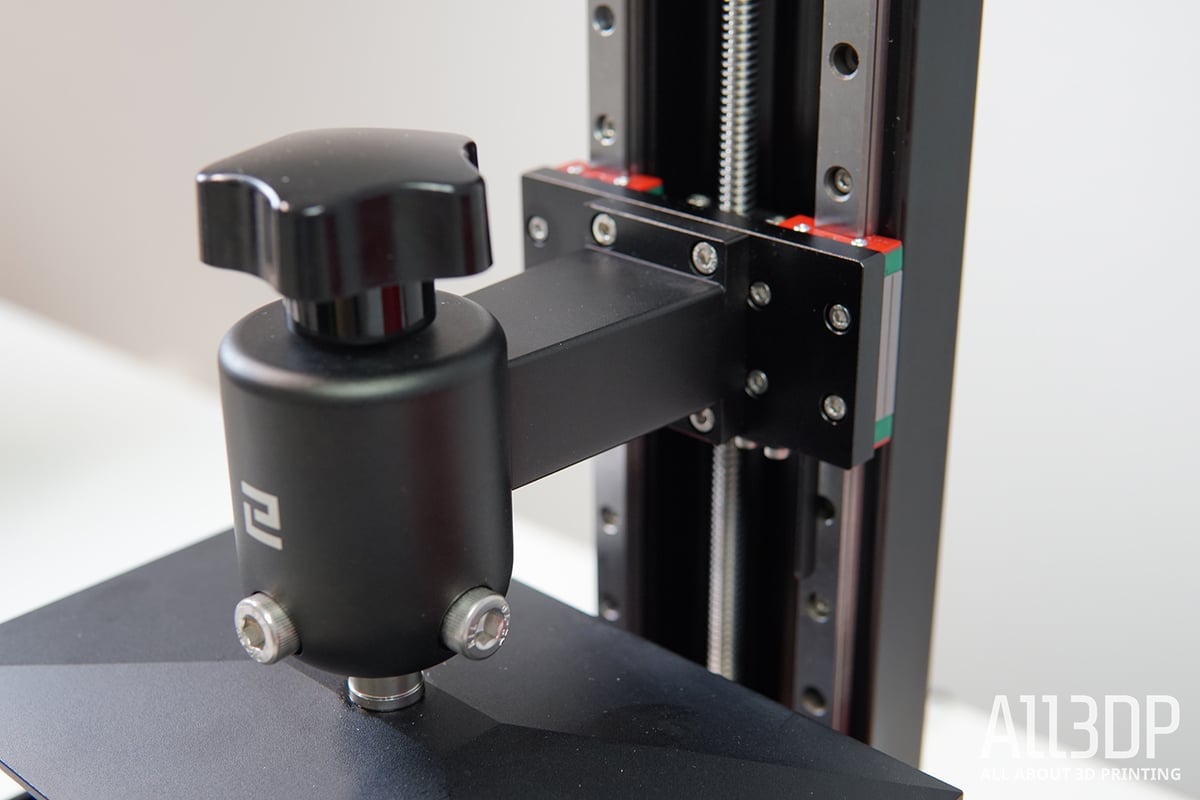
The LCD on an MSLA printer is where the magic happens, and in Saturn’s case, the monochrome display truly is magical. The 8.9-inch 4K screen has a resolution of 3840 x 2400 pixels. Comparing this to the 2K screen, it sounds like almost double the pixels (but would actually be quadruple), but the reality is a little more complicated.
Breaking it down, with a build area of 192 x 120 mm this puts the Saturn at an overall X/Y pixel size of 0.05 mm (50 microns), compared to the ever so slightly more detailed 0.047 mm (47 microns) found on the Mars and Mars Pro. Had the Saturn stayed as previewed with a 2560 x 1600 2K LCD, that old Saturn (if you can consider it such a thing) would have had a pixel size of 0.075 mm (75 microns).
As it stands, at 50 microns the detail possible is indistinguishable from that of the Mars or Mars Pro.
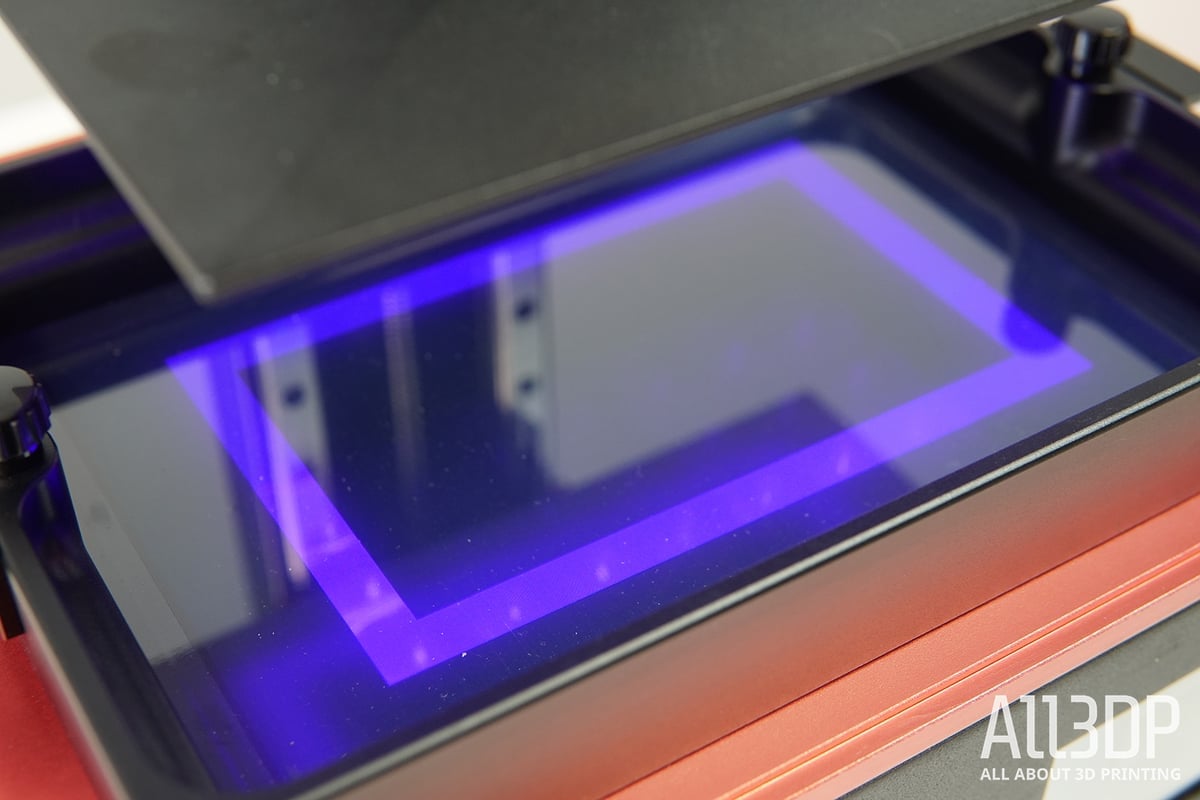
Plus, print speed is where the Saturn stands apart. The monochrome display allows a greater intensity of light to pass through, cutting layer cure times down to as little as 1-2 seconds, in contrast to the likely 6-8 seconds it would take on a non-monochrome display. This makes the Saturn some 60% faster than similar printers, while still producing outstandingly detailed prints. Especially for batch production, this opens up a world of possibilities.
All in all, Elegoo seems to have taken feedback and common sense to heart and made sensible choices to have the Saturn stand apart.
Printing and Usability

Fresh out of the box, the Elegoo Saturn is a slick, well-constrained little cube of a machine. After going hands-on for a few days with the Elegoo Saturn, we can wholeheartedly say that the experience lines up with what one might hope for from the specs of the printer, the company’s previous machines, and our own personal experience with MSLA printers.
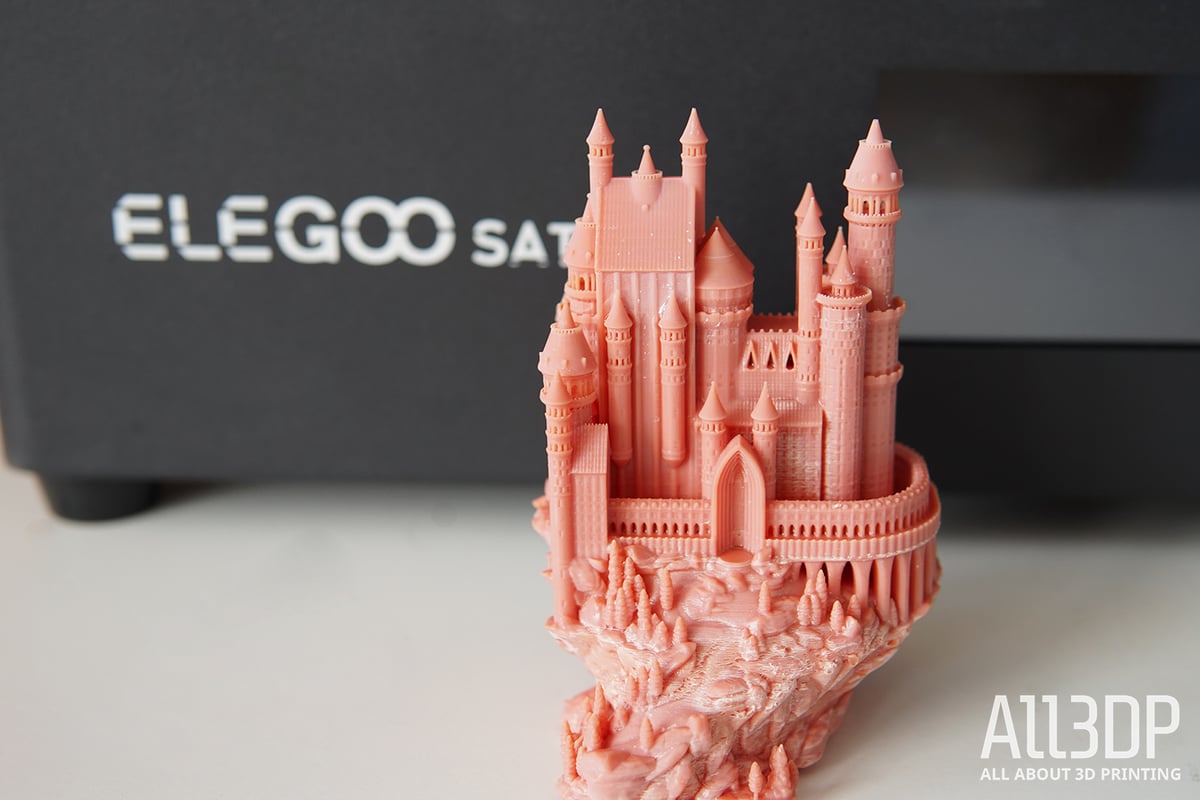
Much like the Mars and Mars Pro before it, printing with the Elegoo Saturn is straightforward. Pre-flight preparations consist of leveling the platform and – at least in our case – manually changing the screen’s resolution in the Chitubox profile to the newly upgraded 3840 x 2400 pixels. It would appear that the LCD spec bump came very late in the day – even the instructions and provided test print use the old resolution.
Nonetheless, it’s all smooth sailing. ChiTu’s highly capable ChiTu Box slicing software makes light work of preparing 3D models, with the obligatory tools (such as hollowing and support structure generation) upfront with the necessary parameters to tweak as you see fit. One thing we would recommend is setting the support structures to “strong” as otherwise, some prints may fall victim to the peel force at layer change.
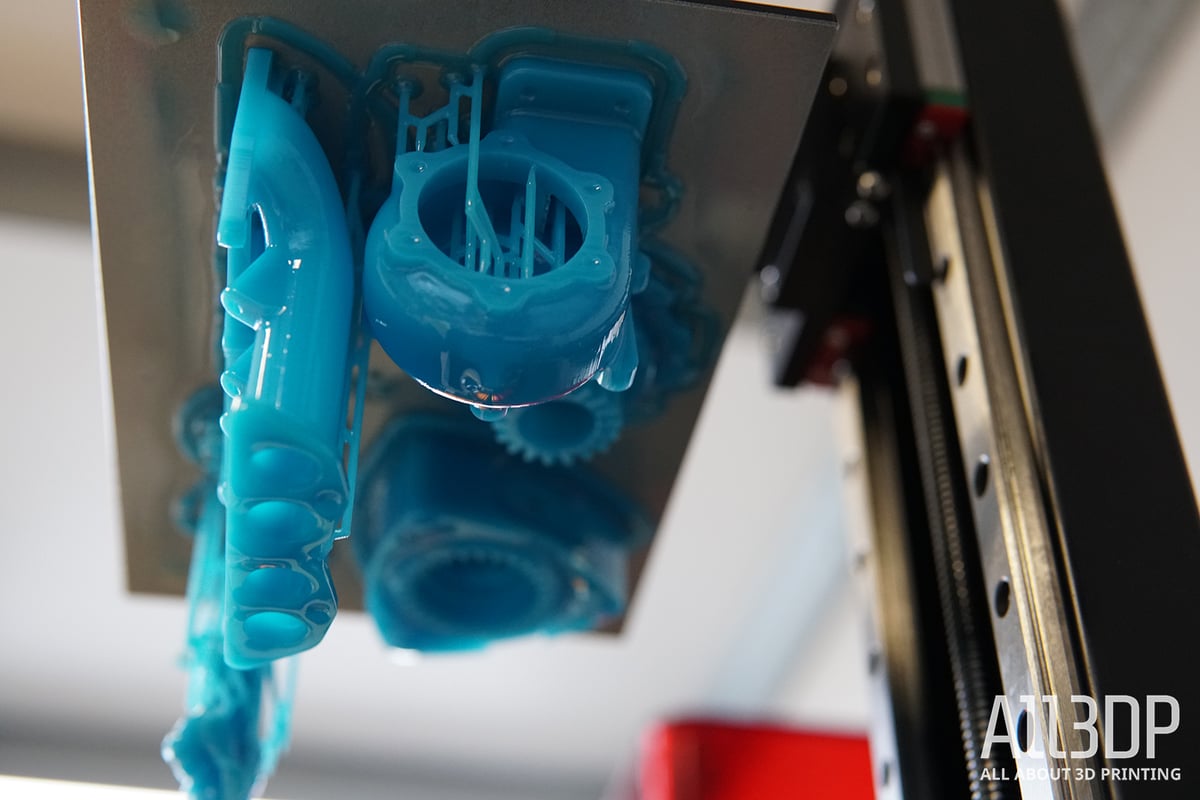
Typically for modern-day MSLA resin printers, the Elegoo Saturn is compatible with many 405nm UV sensitive resins. We ran prints using two Elegoo resin samples provided by Elegoo (bear in mind that the stock printer does not come with any resin). Printing first time with no futzing around, the Saturn printed without complaint with both the company’s own resin and the plethora of remnant resins we have laying around from previous reviews. Even mixtures of Elegoo’s ABS-like resin and standard resins of no particular description cure fast without issue.

The Saturn’s 192 x 120 x 200 mm print capacity pans out to roughly three and a half times the volume and almost three times the print area of the Mars, opening up the possibilities for much larger prints. With the expedited print speed, it all adds up to a lot of fun. During our week-long review, we encountered no notable hiccups beyond the typical messy post-processing universal to MSLA printing.
Verdict
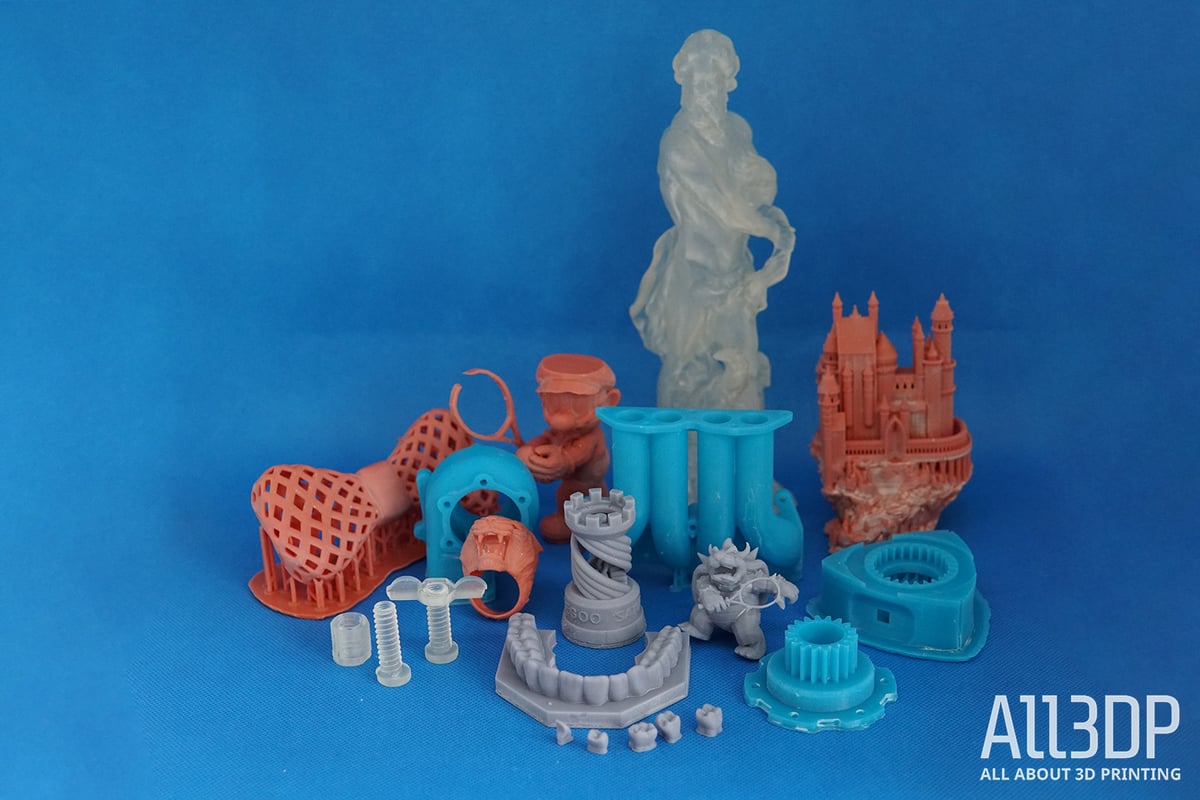
The first wave of preorder units of the Elegoo Saturn was snapped up in mere moments. Such is the demand.
And it’s easy to see why. From our experiences with the Elegoo Saturn over the last few days, we’ve seen exactly what it would be like if you took the excellent Mars, and improved in every which way. An increased build volume combines with the monochrome display for large, high-detail, ultra-fast prints.
A preorder price of $400 gave the Elegoo Saturn a unique place in the market… for the duration of its pre-order phase. We don’t yet know what the market price will be, although rumor has it that the Saturn will settle at (a still reasonable) $500-$600.
We have it from Elegoo that the Saturn won’t reach general availability until November – a tragically long time to wait for one of the hottest printers of the moment. The reason given was for sufficient time on quality control, which kind of follows the hardware changes made as an ad-hoc reaction to beta feedback.
We said of the Elegoo Mars when it launched, that if you’re on the fence about getting a resin printer, to buy two. The Saturn, by all measures so far, is the same. The question is, will the Saturn still be relevant come November?
Features
The Elegoo Saturn looks very much like a scaled-up Mars, featuring many of the same design cues. However, there are some notable changes.
4K Monochrome LCD
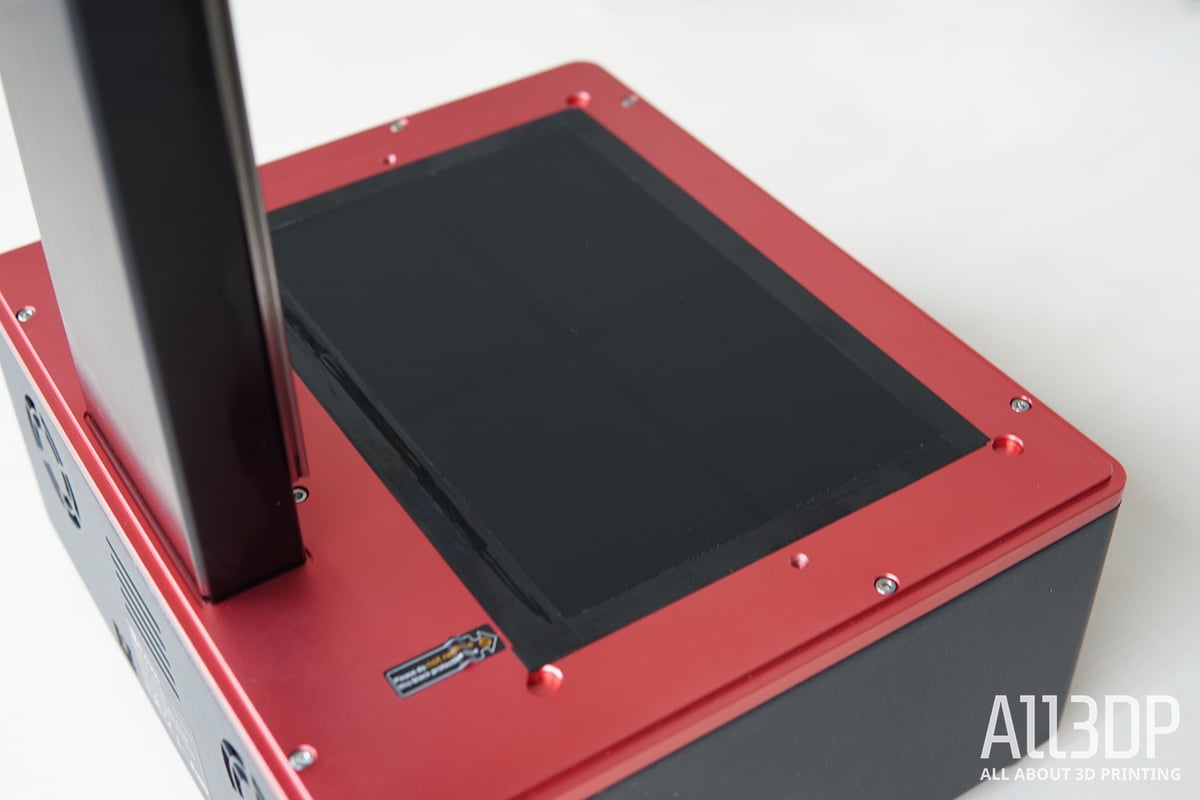
The most notable change from the Mars is, unsurprisingly, the LCD screen. The Elegoo Saturn features an 8.9-inch (23 cm) monochrome LCD screen packing 4K resolution. With a build area of 192 x 120 mm, this gives an overall XY resolution of 0.050 mm (50 microns).
To the uninitiated, the paragraph above probably sounds fair enough. Good specs on what should be an upgrade over Mars printing experience we’re familiar with. The reality of just how much better the Saturn is lies in one little word – monochrome.
The monochrome LCD is a slightly different beast from the LCDs typically used on budget resin printers. Allowing a greater intensity of light through the mask it is displaying, mono LCDs cut layer cure times by a considerable amount. The Elegoo Saturn, in addition to larger prints, will be printing fast. Sub two-second layer times will be bang average, compared to 8 seconds stated for original Mars printers (and even the beta version of the Saturn).
Additionally, the monochrome display is said to last longer compared to the standard LCD screen. Generally, the lifespan of an LCD panel is somewhere around 500 hours. As Elegoo does not comment on the expected lifetime, we can only guess. But obviously, every additional hour is welcome.
Print Resolution
As a direct result of using a 4K screen instead of the 2K panels typically found on such machines (and indeed, originally slated to feature), the Saturn should be capable of squeezing a similar level of detail as it’s smaller brethren onto much larger prints. Taking the 3840 x 2400 pixel resolution divided out across that 8.9-inch mono LCD yields a pixel size of 0.05 mm (50 microns).
The Elegoo Mars’s 2K panel – alongside other comparable MSLA 3D printers with a 2K screen as a light source — has a pixel size of 0.047 mm (47 microns), meaning the Saturn produces prints of a similar, if not indiscernible, quality.
Cooling Fans

The Elegoo Saturn got a second fan to cool the machine when operating. Generally, LCDs deteriorate over time when exposed to heat. Therefore, to prolong the lifetime of the monochrome panel, Elegoo buffed up the Saturn.
Unfortunately, the Saturn does not feature any sort of air filtration system, which we have been told will be released as a separate upgrade after the Saturn’s launch.
Dual Linear Rails
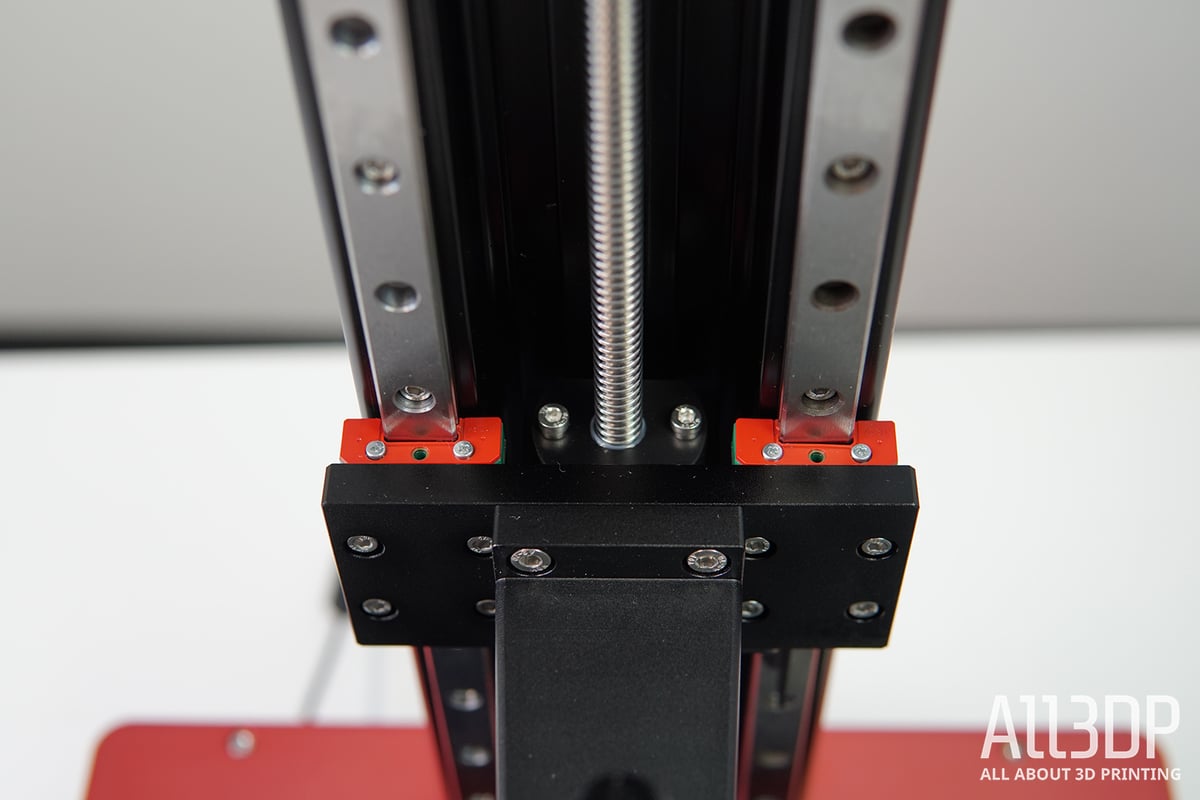
With the increased size of the build platform, increased stability is also a very welcomed addition. Following the trend of its smaller LCD counterparts, the Saturn features two linear rails on its vertical axis, making sure that the build platform stays level throughout the entire printing process.
Color Touchscreen
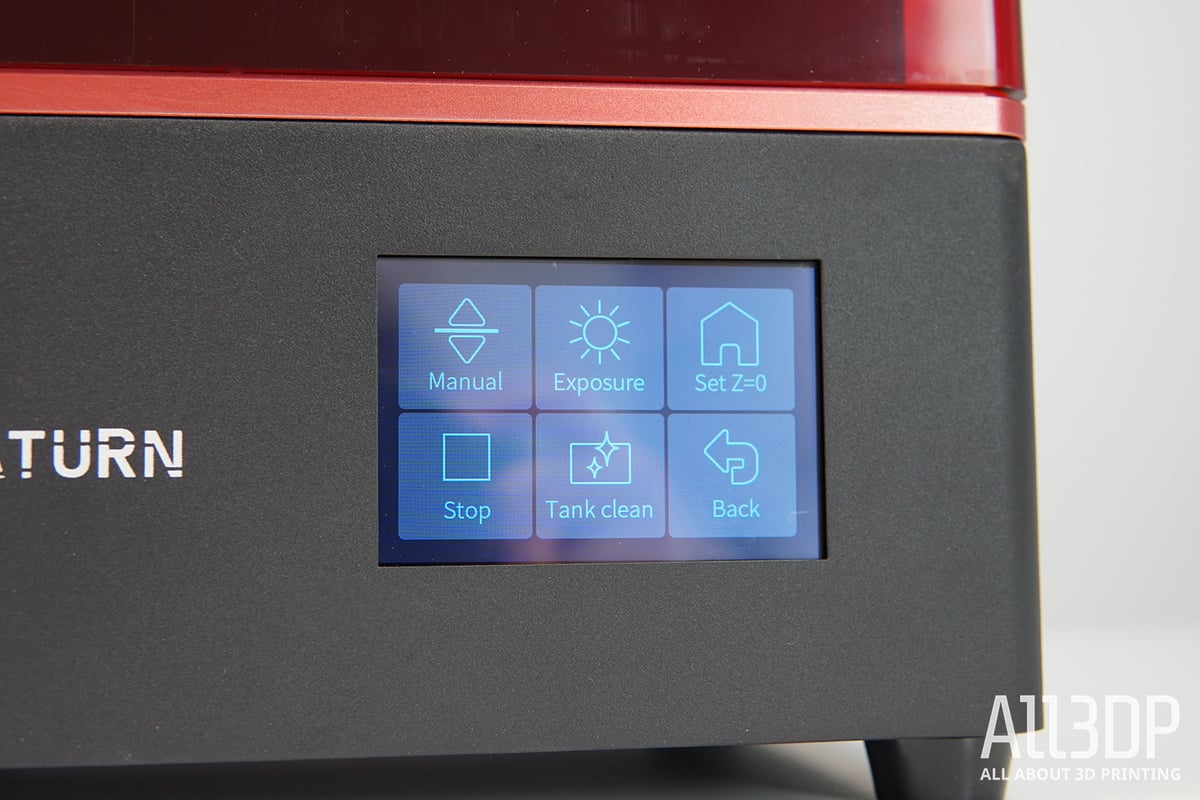
The user interface on the Saturn is a 3.5-inch color touchscreen with an intuitive layout. Powered by a ChiTu board and firmware, the user experience is straightforward and easy to use.
Further Features
Some of the other features available in the Elegoo Saturn include:
- A side-facing USB port for easy access
- Ethernet connectivity – useful for print farms and remote printing
- The new sandblasted print surface promises better adhesion and fewer printing errors
Tech Specs

General Specifications
- Technology: MSLA
- Year: 2020
- Assembly: Fully-assembled
- Manufacturer: Elegoo
3D Printing Specifications
- Build volume: 192 x 120 x 200 mm (7.55 x 4.72 x 7.87 in)
- Layer height: 10 microns
- Resolution: 3840 x 2400 pixels
- XY-axis resolution: 0.05 mm
- Z-axis positioning accuracy: 0.00125 mm
- Printing speed: 30 mm/h
- Bed leveling: Semi-automatic
- Display: 3.5-inch touchscreen
- Third-party materials: Yes
- Materials: 405 nm UV resin
SOFTWARE REQUIREMENTS:
- Recommended slicer: ChiTuBox
- Operating system: Windows / Mac OS X
- File types: STL, SLC, OBJ
- Connectivity: USB, Ethernet
DIMENSIONS AND WEIGHT:
- Frame dimensions: 280 x 240 x 446 mm (11.02 x 9.44 x 17.55 in)
- Weight: 12.5 kg (27.56 lbs)
Similar Printers
You may also be interested in the following printers:
For further information, feel free to check out our Best Resin Printers Guide.
Elegoo Mars
Elegoo Mars is a superb budget resin 3D printer that combines staggering print quality, effortless simplicity in operation, and a rock-solid print preparation workflow for a paltry sub-$300 price tag.
Peopoly Phenom
One of the largest commercially available resin 3D printers, the Peopoly Phenom, offers a staggering build volume of 276 x 155 x 400 mm, which pairs with the same ChiTu firmware and software experience as found on the Saturn.
Phrozen Sonic Mini
The Phrozen Sonic Mini was one of the first budget MSLA printers to use a monochrome display. While sporting similar specs than the Elegoo Mars, the Sonic Mini – just like the Saturn – achieves layer cure times as short as 2-seconds-flat, all for closer to $200 than $300.
License: The text of "Elegoo Saturn Review: Hands On" by All3DP is licensed under a Creative Commons Attribution 4.0 International License.
CERTAIN CONTENT THAT APPEARS ON THIS SITE COMES FROM AMAZON. THIS CONTENT IS PROVIDED ‘AS IS’ AND IS SUBJECT TO CHANGE OR REMOVAL AT ANY TIME.




